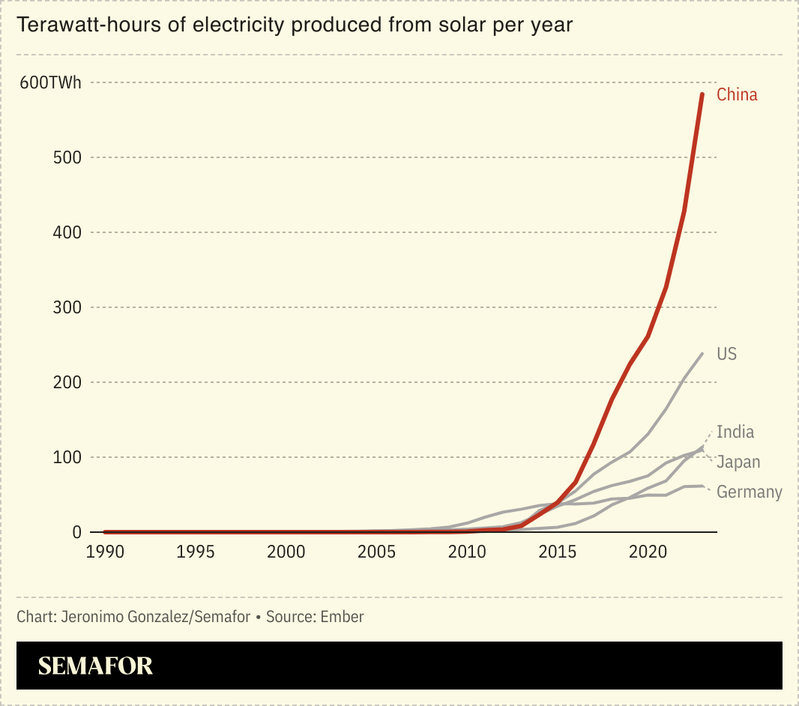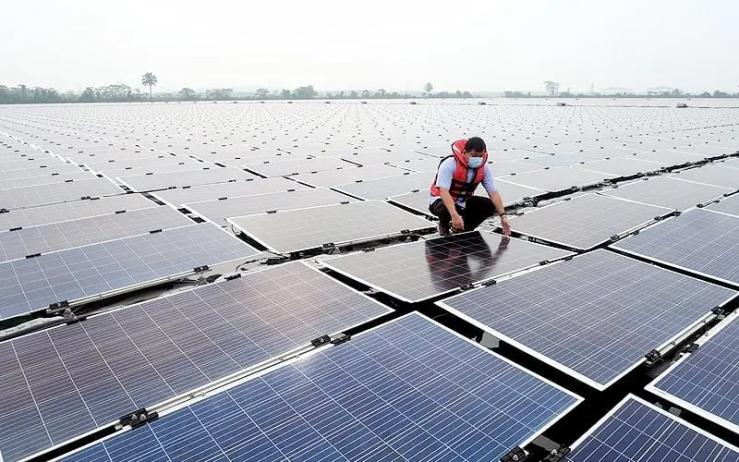The News
The world’s largest offshore solar farm is being connected to the grid.
The 3,000-acre installation, situated five miles off the coast of China’s Shandong province can, when operating at full capacity, generate a gigawatt of electricity — enough to power about a million homes.
Offshore solar, which sidesteps the renewable’s land-use demands, is becoming increasingly popular; Taiwan inaugurated what it said was the world’s largest plant just last week.
The price of solar is falling faster than other renewables: Our World in Data estimated that, between 2010 and 2019, the cost of solar energy per megawatt-hour fell 90%, while wind fell 70%.

SIGNALS
China’s green transition still outpaces the rest of the world
China is the world’s biggest carbon emitter, yet its investment in green technology has also “smashed international forecasts, exceeded Beijing’s own targets — and put the rest of the world on notice,” the Financial Times wrote. The market leader in batteries for electric vehicles and solar panels, China dominates the decarbonization supply chain, Nikkei Asia wrote. “Considering the significance of the scale of everything China does [a rapid green transition] has far-reaching impacts for the climate and our global emissions reduction goals,” an expert at think tank Climate Energy Finance said. Beijing’s dual goals — “to hit peak carbon emissions by 2030 and achieve carbon neutrality, or net zero, by 2060” — could also transform the country’s economy, the Financial Times wrote.
Green resources present a diplomatic headache for the West
The US and its allies have direct access to less than 10% of the world’s rare earth elements, crucial to manufacturing green energy technology, but China alone sits on more than 60%, the Center for Economic Policy Research wrote. This discrepancy poses a challenge for Western countries striving to hit Net Zero. China’s dominance over lithium has fueled a trade war over electric vehicles between Beijing, Washington, and Europe, and while the US and Europe work to “derisk” supply chains from China, they also risk delaying the green transition. Meanwhile, more readily accessible supplies are also increasingly less so: The war in Ukraine has significantly disrupted global neon supplies, crucial for semiconductor chips.


